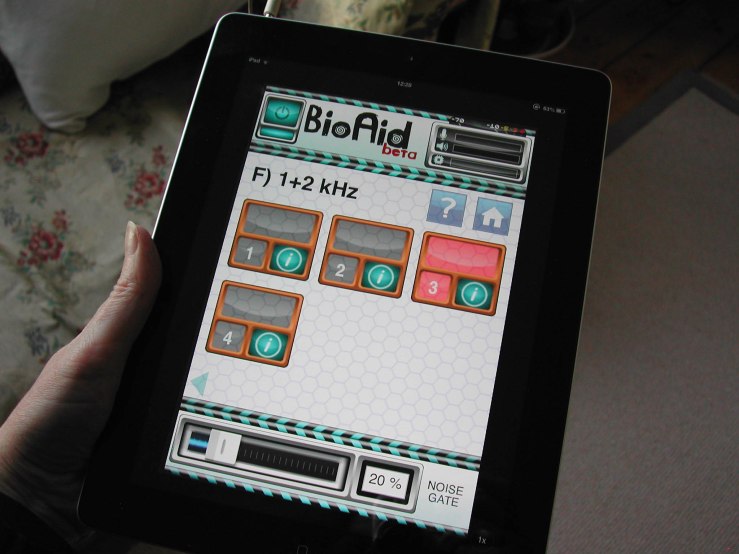One day, in a far-off digital future, all hearing aid users will be able to tune their hearing aids to their own specifications, all by themselves. Instead of just being able to choose between programmes which suit listening to the tv in quiet, conversing in a noisy restaurant, or trying to tune into a non-functioning loop, they will have access to multiple programmes tailored to individual activities in different types of acoustic spaces. They will be able to swap effortlessly between an open or closed fitting, and they will be able to prioritise music over speech if they feel like it.
Cookiebiters and reverse slopers will benefit most from this brave new world. Instead of being forced to endure a badly modified version of an algorithm designed to fit high frequency losses, they will have specially designed algorithms which will allow access to minute adjustments across the entire frequency spectrum, with smooth transitions in amplification which, for me, will mean no more terrifyingly loud keys in the C6 area of the piano keyboard. I will enjoy full harmonic resonance on the mid to lows when playing Schubert, and spend hours playing low notes with the left hand just because it sounds wonderful.
Until that historic moment arrives, I am making do with my latest hearing aid hack for digital piano playing. The Kookybite Bass Bung® (pictured) transforms an open dome to sort of semi-closed for home musical purposes. Carved from a 60p eraser from WH Smith, it may be a little eccentric, but it works. By turning down the volume switch on my music programme, and trapping the previously lost low frequencies in my ear with the bung, the troublesome C6 zone is dampened, whilst resonance returns to the previously thin bass notes. My piano no longer sounds like the speakers are stuffed with cotton wool, and I have fallen back in love with it again after a rather prolonged playing hiatus. Naturally, speech is pretty incomprehensible with this arrangement, and your breathing becomes a bit Darth Vader, but this doesn’t matter unless you’re playing your piano in a crowded cocktail bar whilst suffering from a lung infection.
One day, when I find someone who knows anything about fitting cookie bite hearing loss, I shall get them to set up my hearing aids to do this properly, so that I can enjoy playing Schubert without the unfortunate downside of being deafened by passing cars…
Update: After finding little bits of coloured rubber everywhere, the spouse recently asked me to consider the possibility that I was going a bit mad. I am vindicated, however, by this article which very clearly and succinctly explains the shortcomings of hearing aids in relation to listening to music, and notes how important those low frequencies are. The bit in the article about the high proportion of keys on the piano sitting below the 1kHz threshold also illustrates why the reverse sloper/ cookiebiter may be on a hiding to nothing with their piano and a default Autofit NHS hearing aid fitting…







